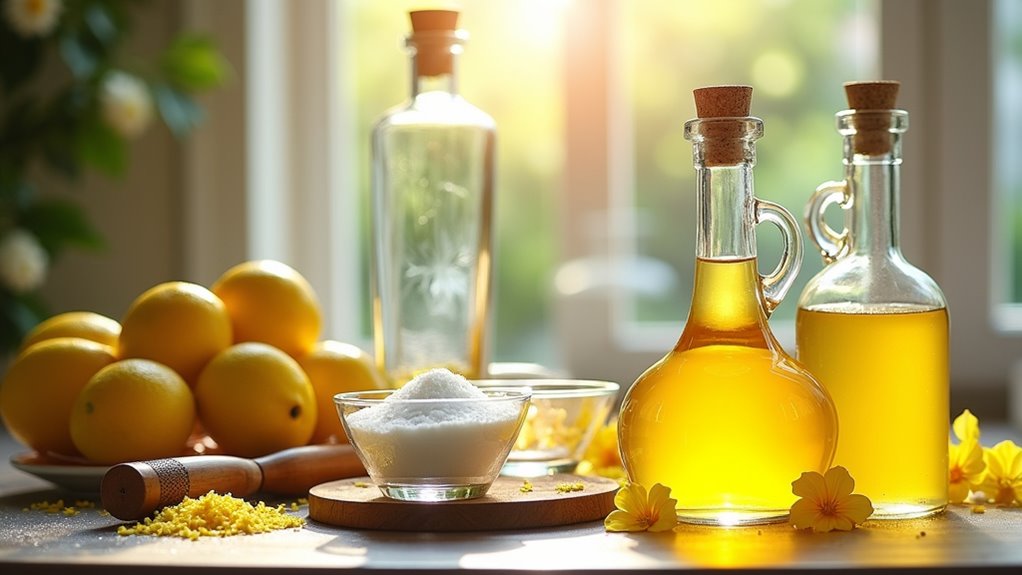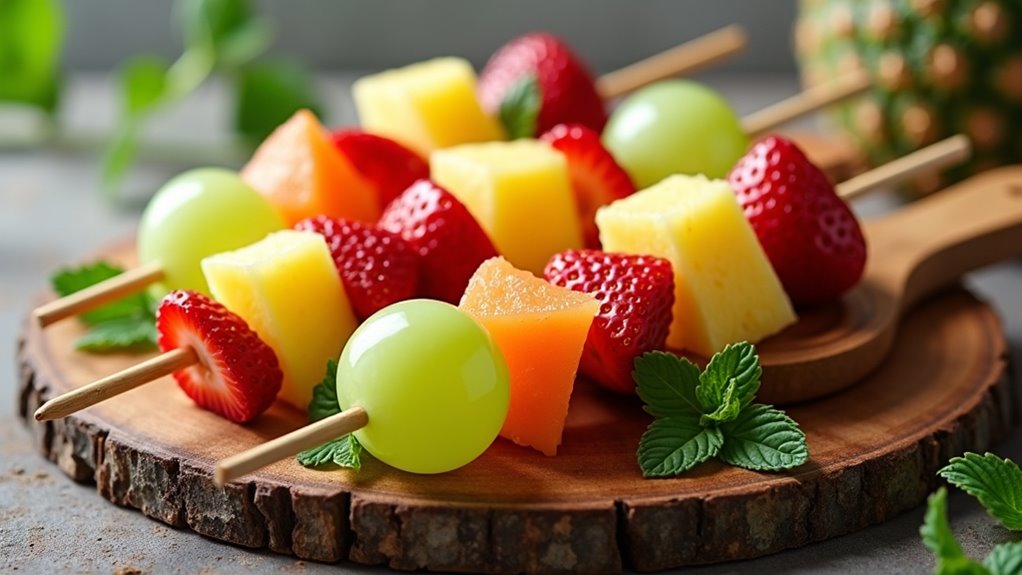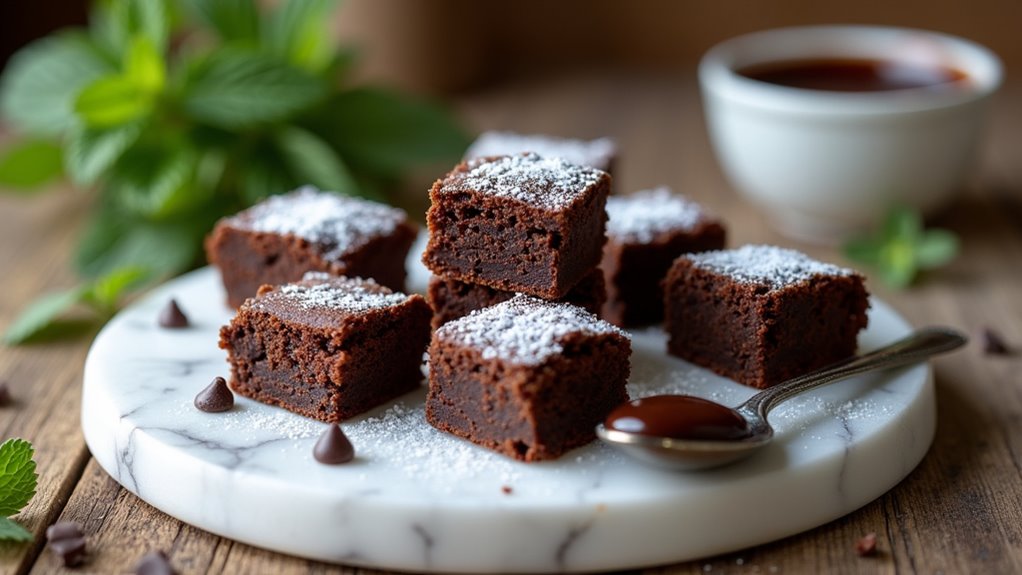“Last summer, my friend Carlos visited from Boston, lamenting that his homemade limoncello tasted nothing like what he’d enjoyed in Positano. Looking at his cloudy concoction, I immediately spotted his mistakes. ‘The secret’s in the zest, not the juice,’ I explained, showing him my technique. Two weeks later, he called raving about his batch—bright, aromatic, and silky-smooth. Now he impresses dinner guests with bottles of liquid sunshine that transport them straight to the Amalfi Coast.”
What is Limoncello?

Limoncello, a bright yellow Italian liqueur, offers a refreshing balance of sweet and tangy flavors that capture the essence of Mediterranean sunshine.
I’ve been making authentic limoncello for years using the traditional method of steeping lemon peels in high-proof alcohol to infuse the pure lemon flavor throughout the spirits.
This Italian liqueur made from just four ingredients has deep roots in Italian culture.
“Limoncello is more than just a drink; it’s a representation of Italian hospitality,” notes culinary historian Maria Rossi.
My homemade limoncello recipe follows centuries-old techniques from the Amalfi Coast, where families pass down their methods through generations.
History and Origin

Although its exact beginnings remain somewhat disputed, the vibrant history of limoncello traces back to the sun-drenched regions of Southern Italy in the early 20th century.
The Amalfi Coast and Sorrento, famous for their fragrant citrus groves, became the birthplace of this lemon liqueur.
Traditional families created limoncello by infusing lemon peels in alcohol, a practice passed down through generations.
“Limoncello was born from tradition, but its commercial popularity exploded in the late 20th century,” notes Dr. Antonio Cavallo, food historian at the University of Naples.
Today, authentic Italian limoncello remains a symbol of Mediterranean hospitality, with each region claiming their own special variation.
How to Make Limoncello at Home (Step-by-Step Guide)

Four simple ingredients are all you’ll need to create authentic limoncello in your own kitchen.
I always use organic lemons to make limoncello since the zest is the star ingredient. The process takes patience but rewards you with liquid sunshine.
- Select 10-12 unwaxed organic lemons with thick, aromatic peels
- Remove lemon zest carefully, avoiding bitter white pith
- Infuse zest in 750ml high-proof alcohol for 7-14 days
- Prepare simple syrup by dissolving 2 cups sugar in 2½ cups water
- Filter and bottle the limoncello in sterilized glass containers
USDA research confirms lemons provide antimicrobial benefits alongside vitamin C, making homemade limoncello both delicious and beneficial.
Tips for Achieving the Perfect Limoncello Flavor

To achieve perfect limoncello flavor, you’ll need to master several critical variables during the preparation process.
The infusion time directly impacts your liqueur’s intensity—I recommend 7-14 days for optimal extraction from lemon peels. Monitor the color as it deepens to a vibrant yellow.
Balance sweetness carefully by adjusting your simple syrup ratio. Start with 1:1 sugar-to-water, then customize to taste.
Quality ingredients matter tremendously—organic, unwaxed lemons produce the most authentic citrusy flavor.
“The best Limoncello is all about patience and quality ingredients,” notes Chef Carlo Verdi.
Let your finished liqueur rest 2-4 weeks before serving.
Variations of Limoncello

While mastering traditional limoncello provides a solid foundation, exploring variations offers exciting possibilities for your homemade creations.
Try making limoncello cream by combining your lemon-flavored liqueur with heavy cream or coconut milk for a rich, silky texture. Equal parts will create the perfect balance.
For non-alcoholic options, simmer lemon zest in simple syrup, then strain and chill. Add sparkling water for a refreshing alternative that everyone can enjoy.
Create flavored variations by infusing your grain alcohol with other citrus fruits like oranges or grapefruits.
Fresh herbs such as basil, rosemary, or thyme introduce complex aromatic notes. According to the USDA, these simple ingredients offer diverse phytonutrient profiles.
Storing and Serving Limoncello

Once you’ve bottled your homemade limoncello, proper storage becomes essential for maintaining its vibrant flavor profile.
Keep your limoncello in the freezer—its high alcohol content prevents complete freezing while ensuring it’s always ice-cold for serving.
For best results, serve limoncello in chilled glasses after a meal, as Dr. Maria Paola from the Italian Culinary Institute advises: “Limoncello should be served ice-cold in small amounts, usually after a meal.”
I’ve found that pre-chilling small cordial glasses preserves the fresh zesty flavor.
Pour just 1-2 ounces per serving.
This traditional serving approach highlights the digestive benefits while showcasing your homemade creation.
How to Use Limoncello in Cocktails and Desserts

Homemade limoncello transforms from a simple digestif into a versatile ingredient that’ll elevate both cocktails and desserts.
This sweet lemon liquor pairs beautifully with sparkling wine or soda water.
Make a limoncello spritz by combining 1 oz limoncello, 3 oz prosecco, and a splash of soda water.
For a stronger option, mix 2 oz proof vodka with 1 oz sweet limoncello in a shaker with ice.
For desserts, brush limoncello onto cake layers or make a simple syrup with equal parts limoncello and sugar.
Limoncello is made with lemons, so it’s easy to make lemon-forward sorbets, glazes, and creamy tiramisu variations.
Frequently Asked Questions
Is Homemade Limoncello Safe for People With Citrus Allergies?
No, I don’t recommend homemade limoncello for those with citrus allergies. It’s made primarily from lemon peels, which contain the allergens that would trigger a reaction. Better to avoid it completely for safety.
Can I Make Limoncello With Meyer Lemons Instead of Traditional Lemons?
Yes, I’ve used Meyer lemons for limoncello and they’re wonderful! They’ll give you a sweeter, less tart flavor with subtle floral notes. The process is identical, but your final product will taste distinctly different.
How Long Does Homemade Limoncello Need to Age Before Gifting?
I’d recommend aging your homemade limoncello for at least 2-4 weeks before gifting. The longer it rests, the smoother it becomes. I’ve found one month creates that perfect gift-worthy balance of flavors.
What’s the Alcohol Content of Typical Homemade Limoncello?
The alcohol content of my homemade limoncello typically ranges between 25-30%. I find this balanced sweet spot gives you that warming sensation without overwhelming the lemon flavors. You can adjust it to your preference though!
Can I Make Non-Alcoholic Limoncello That Tastes Authentic?
I’d say no, you can’t make truly authentic non-alcoholic limoncello. The alcohol is essential for extracting lemon oils and creating that distinctive flavor. You can make lemon syrups that approximate it, though.
Final Thoughts
Crafting authentic limoncello at home transforms simple ingredients into liquid sunshine. Patience truly rewards you with intense citrus flavors that commercial versions rarely match. Store your golden elixir in the freezer and serve in chilled glasses for the ultimate experience.
The traditional process may take time, but the results are well worth the wait. Properly stored, your homemade treasure will maintain its vibrant character for up to a year. Most of my batches retain perfect flavor for 6-8 months when handled with care.
Once you’ve made your homemade Limoncello, try it in some delicious cocktails! Check out our list of 20 Best Limoncello Recipes for inspiration.



